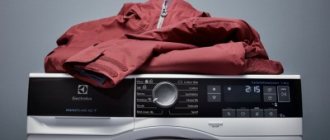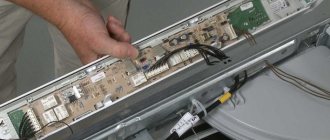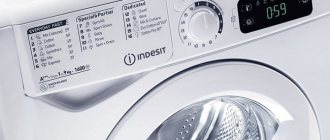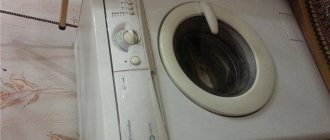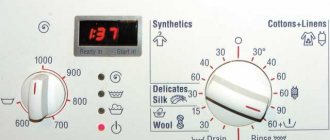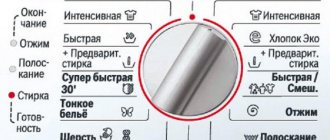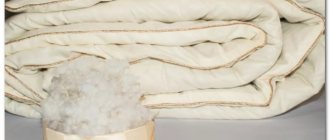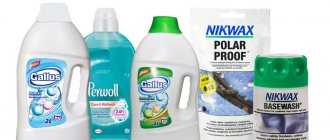Author: Dixi_Mole
31 May 2022 06:52
Community: Sports
Tags: Washing machines swimsuits life hacks powders tips sportswear washing
6884
7
It would seem that it could be easier to wash dirty sportswear? I put it in the washing machine, poured in powder, added conditioner, set the program and that’s it, go watch your favorite TV series in peace. But after such washing the results are not always good.
0
Source:
See all photos in the gallery
The CEO of London-based laundry and dry cleaning service LaundryHeap, Deyan Dimitrov, has revealed several secrets on how to properly wash sportswear and swimwear.
Sportswear care labels
Tracksuits are made from different fabrics: velvet, diving, polyester, raincoat, etc. Each material requires an individual approach. Manufacturers indicate care recommendations on the label:
- washing water temperature;
- washing machine mode;
- permissibility of bleaching;
- spin intensity;
- drying method;
- ironing temperature;
- dry cleaning options.
If there is not enough information, you can use general tips for caring for tracksuits.
Explanation of the main icons
The following visual instructions will help you decipher the symbols on the tag:
"Grandma's" remedies
If you decide to go for a run through the countryside and won’t get home soon, you can wash your sportswear using the means at hand.
- Regular baking soda. To use it to clean clothes, you need to prepare a solution: 1 teaspoon per glass of warm water. Apply it to the item and leave for 20-30 minutes. Then stretch.
- Table vinegar. As practice shows, it perfectly neutralizes the smell of sweat. You can replace it with lemon juice or citric acid. The soaking solution is prepared in the following proportions: 1 teaspoon per half glass of water. Things should be allowed to lie in such water for 15-30 minutes. And after that, stretch.
- If the smell has already ingrained itself into your clothes, a solution of vinegar and soda will help get rid of it. Add half a glass of vinegar and a tablespoon of soda to a bowl of water for soaking. And also pre-soak briefly. Then wash. This solution effectively destroys bacteria that have settled in the tissue.
- Laundry soap does an excellent job with both sweat and stains from it. You can use it in the following way: wet, for example, a T-shirt, rub it with laundry soap and leave to lie for half an hour. Then soak for the same amount of time and wash.
“Grandma’s” products are best used on summer equipment. But clothes made from membrane fabrics should still be washed with specialized products.
How often should you wash your gym clothes?
You need to wash your sports suit after every workout. After physical activity, clothes become soaked with sweat - this is an ideal environment for bacteria. The unpleasant odor is absorbed into the fabric fibers and will be difficult to remove over time.
The suit must be washed within 24 hours after returning from the gym. If you can’t start washing right away, you need to dry the item.
Drying will stop the growth of bacteria, but will not get rid of the smell of sweat.
Inside out
0
Source:
Arranging clothes by color, fastening all the buttons and zippers is only half the battle. It turns out that you need to turn all your clothes inside out before putting them in the machine. The expert believes that this way the outer layer will not come into contact with other fabrics during washing, and this will reduce wear. For the same purposes, you need to use mesh bags. According to him, this practice allows you to increase the shelf life of any items, not just tracksuits.
×
What is the best way to wash - in a machine or by hand?
Unless the label says otherwise, you can wash your sportswear in the washing machine. General recommendations:
- choose the fastest mode with two or more rinses;
- fasten zippers and buttons before placing them in the drum;
- turn suits and T-shirts inside out;
- if there are special recommendations from the manufacturer, then manually set the number of spin speeds and temperature conditions;
- Do not use bleaches, conditioners or other aggressive products.
Use mesh bags in which clothes are placed before being put into the drum. This way you will avoid puffs, abrasions, and deformation of the sleeves and legs.
Bags are a must when washing thin running shirts and thermal underwear.
Where does the bad smell come from?
According to scientists, sweat itself has no odor. Toxins and bacteria give it a unique “aroma”. The latter feel quite comfortable not only on the body, but also inside the synthetic fibers from which the fabric of sportswear is made. The sweat removal system helps absorb it into things, creating a favorable living environment for them. Therefore, if you do not wash your equipment in a timely manner and leave it to “sour” in your bag after training, bacteria will begin to live and multiply in it. Even antibacterial impregnation cannot neutralize the process. In addition to the terrible smell, an unwashed T-shirt or leggings will cause pimples and pustules to appear on the body.
Toxins released through sweat also give the smell a killer “uniqueness.” Proper nutrition with a minimum of flour, fatty, sweet and fast food and visiting a bathhouse or sauna will help you cope with this component.
Gel instead of powder
Most tracksuits must be washed at low temperatures, and laundry detergent does not dissolve well in cold water. Grains of the product remain in the seams, clog the pores of the membranes, causing skin irritation and allergies. An alternative to powdered products is gels.
Gels do not affect the color of clothing and do not damage reflective elements. Standard dose – 2 tsp. for 1 wash. If there are clear traces of sweat or dirt on things, then you need to go over them with a toothbrush dipped in the gel.
Cotico
For tracksuits, T-shirts and sneakers, the Cotico line of concentrated gels produced by B&B Company is suitable.
Peculiarities:
- lack of phosphates;
- based on natural surfactants and potassium soap;
- effective when washing in cold water;
- soft effect on matter;
- low consumption;
- weak foam formation.
The product does not damage neoprene, microfiber, membrane, polyester materials.
Burti
Burti Sport&Outdoor gel from the German manufacturer Burnus is created specifically for washing sportswear and shoes. The product removes stains from sweat and dirt at low water temperatures.
Characteristics:
- composition based on keratin and silk proteins;
- Suitable for delicate items made of silk or wool;
- replaces air conditioner;
- restores tissue structure from the inside, maintains elasticity;
- protects the washing machine from scale;
- washes off easily.
Burti Sport&Outdoor has a neutral scent. The product effectively cleans membranes.
Do not add fabric softeners
Do not use fabric softener when washing sportswear. They cover the fabric, thereby trapping odor and bacteria. To remove the conditioner from things, you will have to wash them several more times. In addition, it destroys the elastic properties of sportswear.
To soften your items, use a home remedy. Simply add ½ cup of white distilled vinegar to the conditioner compartment before the final rinse cycle. Vinegar will not only soften clothes, but also rid them of detergent residue.
How to wash shoes of different brands?
Depending on the brand under which the sneakers are produced, the rules for caring for them will differ. We are talking about original brands, and not about Chinese analogues .
Sneakers from New Balance and Reebok cannot be machine washed. The manufacturer does not recommend the use of bleaches. Dirt should be removed from them with a special brush.
These rules apply to suede, textiles, synthetics and nubuck.
Shoe manufacturers Adidas, Nike and Puma allow hand washing in a cool soapy solution using a soft brush . However, not all models may be subject to such processing.
Problems you may encounter after
The main problems that a person may encounter after washing sneakers:
- The shoes turned yellow. You can get rid of stains by washing again using a gentle bleach.
- There were stains on the sneakers. To deal with them, you need to thoroughly rinse your shoes.
- The sneakers have lost their shape. To give them their previous appearance, you need to wet the shoes, stuff them with paper and leave them until completely dry.
- They creak. To get rid of unpleasant sounds, you can lubricate the accessible elements with soap, and pour colorless silicone into the existing cavities.
Manual cleaning at home
You can wash your sneakers by hand. This is especially true for shoes made of suede, nubuck, and genuine leather.
Hand washing can be done with or without pre-soaking . To carry out the procedure, you can use liquid detergents, washing powder or ordinary laundry soap.
The most important thing is to thoroughly dissolve the detergent composition in water. The water should remain cool. Heavily contaminated areas are additionally rubbed with a brush.
Read more about hand washing sneakers here.
Washing Gore-tex, Windstopper, Texapore and other membranes
All the tips from our article are also suitable for membrane items. There are only 2 additions:
- do not dry-clean membrane items
- after washing, restore the water-repellent coating with a special impregnation
- activate the water repellent component in the membrane
To “activate” the membranes, manufacturers recommend ironing the item through a towel or placing it in a machine dryer on a gentle setting.
Attention! The instructions written by the manufacturer are always more important than all advice. If the instructions recommend washing at 30 degrees and not ironing, then do so. The manufacturer knows his item best and how to care for it.
How to dry it properly?
Dry your sneakers naturally. Most products do not tolerate contact with direct sunlight.
Shoes should not be heated by placing them on a heating radiator or near a gas stove.
You can speed up drying by taking the sports pair out into the fresh air or into a room with low humidity.
To give the sneakers the correct shape, they can be stuffed with paper. Read more about drying shoes after washing here.
Sneakers: washable, do not wash
Most manufacturing companies recommend washing sports shoes exclusively by hand. However, as the experience of runners shows, your favorite sneakers can easily survive machine washing if you follow some rules.
You definitely shouldn’t experiment with shoes made of natural or artificial leather, or if they have glued elements - after washing they will be separated from the sneakers. But pairs made from synthetic materials are usually strong enough to withstand more than one machine wash. However, it is still better to remove the laces and insoles and wash them separately. If we are talking about individual orthopedic insoles, they should be washed by hand - thoroughly and with soap.
Photo: istockphoto.com
Before you put your shoes in the drum, you need to rinse the soles to remove any dirt, leaves, or other debris that may have become lodged in the treads during outdoor activities. To do this, you can use toothpicks or, for example, matches. Then place the sneakers in a special laundry bag. An alternative can be an old pillowcase or towel - they will fill the empty space and soften the impact of shoes on the walls of the drum.
You need to wash your sneakers on the most delicate program and at the lowest temperature - hot water or prolonged washing can deform the shoes. It is convenient to use paper towels for drying. First, gently blot the boots to remove excess moisture, then tamp down new dry towels inside to maintain their shape. Dry your sneakers away from radiators and other heat sources. If you doubt that your shoes will survive machine washing, you can wash them by hand. Use soap and special brushes. A brush with hard bristles is suitable for the sole, and a brush with soft bristles for the textile part.
Instructions for use: how to keep sneakers fresh in the summer
Important Tips
Top 5 tips for washing sneakers:
carry out proper preparation of shoes for the upcoming cleaning (removal of laces, insoles, dirt, stones, etc.);- use a special mesh when automatically washing shoes;
- minimize the contact time of sneakers with water;
- do not wash shoes made of suede, nubuck and leather in automatic mode;
- Dry the pair thoroughly after wet cleaning.
If the shoes are not stitched, but are fixed with glue, they can only be washed by hand and without pre-soaking.
